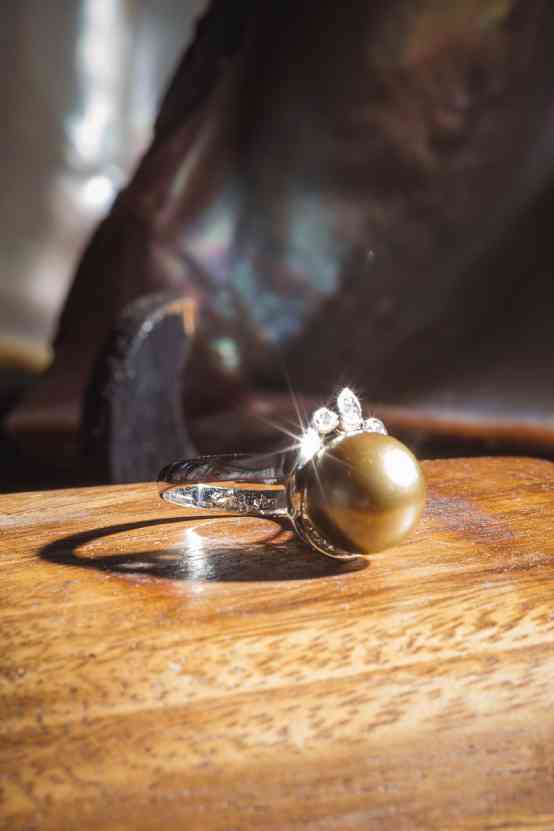
Pearl Center. JILSON SECKLER TIU
If you have visited Davao recently, you would know that an avid shopping tourist doesn’t want for anything here, what with this city’s fair share of mega malls and shopping centers. Whatever Manila or Cebu has, chances are, Davao has it, too.
On a recent visit, however, what thrilled the shopper in us was the stuff that is uniquely Davao’s own.
Take, for instance, the wares of Yvette Marie Celi Punzalan (e-mail: y_celi@yahoo.com, mobile 0927-6600447, 0947-3615176), who designs and exports bags. She doesn’t have a store or showroom so we visited her workshop instead.
Punzalan crochets and braids plastic twine straw and makes them into handbags of various shapes and sizes loved by her clients in the US, Japan, Hong Kong, the Maldives, and United Arab Emirates.
I bought from her a black clutch, a hefty ball of crocheted twine that looks like an Afro ’do. A colleague christened the purse “Mich,” because it reminded her of the curly mane of a popular milliner.
I’ve been carrying it to events and it always gets compliments. It’s a conversation piece. In one such affair, one CEO said her sister sells the same bag in Singapore. It cost me only P800.
A dog lover, Punzalan’s workshop is littered with pets. The longhaired Shih Tzu breed inspired one of her more striking fringed designs. An admirer of my “Mich” clutch said it reminded her of a poodle. The twine straws the designer uses are color-customized.
Punzalan has been showing at Manila FAME and other trade shows. She has been in the business for eight years, and employs women in her neighborhood. Everything is handmade.
South Sea pearl
If it’s South Sea pearls you want, there’s one place in Davao where you could find the finest: Mindanao Pearl Center (JP Laurel Avenue, Bajada; mobile 0915-9433158, e-mail mindanaopearl_southsea@yahoo.com; and at The Marco Polo Davao).
Its CEO and general manager, Sitti Ong Go, swears the gems are far superior in quality than what you might find in Greenhills—thus pricier, but in no way cost as much as a luxury brand.
If you’re lucky to chance upon Go, a third-generation pearl trader, she would be happy to give you a crash course on pearl appreciation—what makes a South Sea pearl special, and how to spot the real deal. The old practice of rubbing together or burning the pearl is no longer reliable, she says.
Go’s family are pearl farmers from Zamboanga, and, with her grandfather’s Japanese partner, used to sell only raw pearls wholesale. They’ve shifted to selling pearl jewelry when she took over the business, their clients mostly from the US and the Middle East.
MPC sells only South Sea pearls—class “AA” and “A”—and baroque South Sea pearl, which Go clarifies isn’t the same as the irregular-shaped wild or natural pearl. The latter is costlier than a regular South Sea.
Though many pearl shoppers still prefer white, says Go, golden South Sea pearls are becoming popular, and are about 20 percent more expensive.
Go designs the jewelry herself. The pearls at MPC are set in 14-karat gold.
Souvenirs
For bargain souvenirs, you’ll never go wrong with a stop at Aldevinco Shopping Center, a Davao City landmark, where you can find cotton malong for as little as P100, and a motley of batik items and regional products.
For more special and handcrafted items, prepare to pay more—up to P35,000 for an exquisite, fully beaded Manobo traditional top, like the ones I found in a stall called Ulama.
The colorful costumes reminded me of the ones a female senator likes to wear to the Sona, and would look very chic and contemporary when paired with jeans.
However, I wasn’t prepared to shell out P27,000 for the beaded cropped top I had my eyes on. Sometimes I still find myself staring at the photo on my phone.

